10 Best Ways To Keep Belly Fat Under Control in Your 40s & 50s
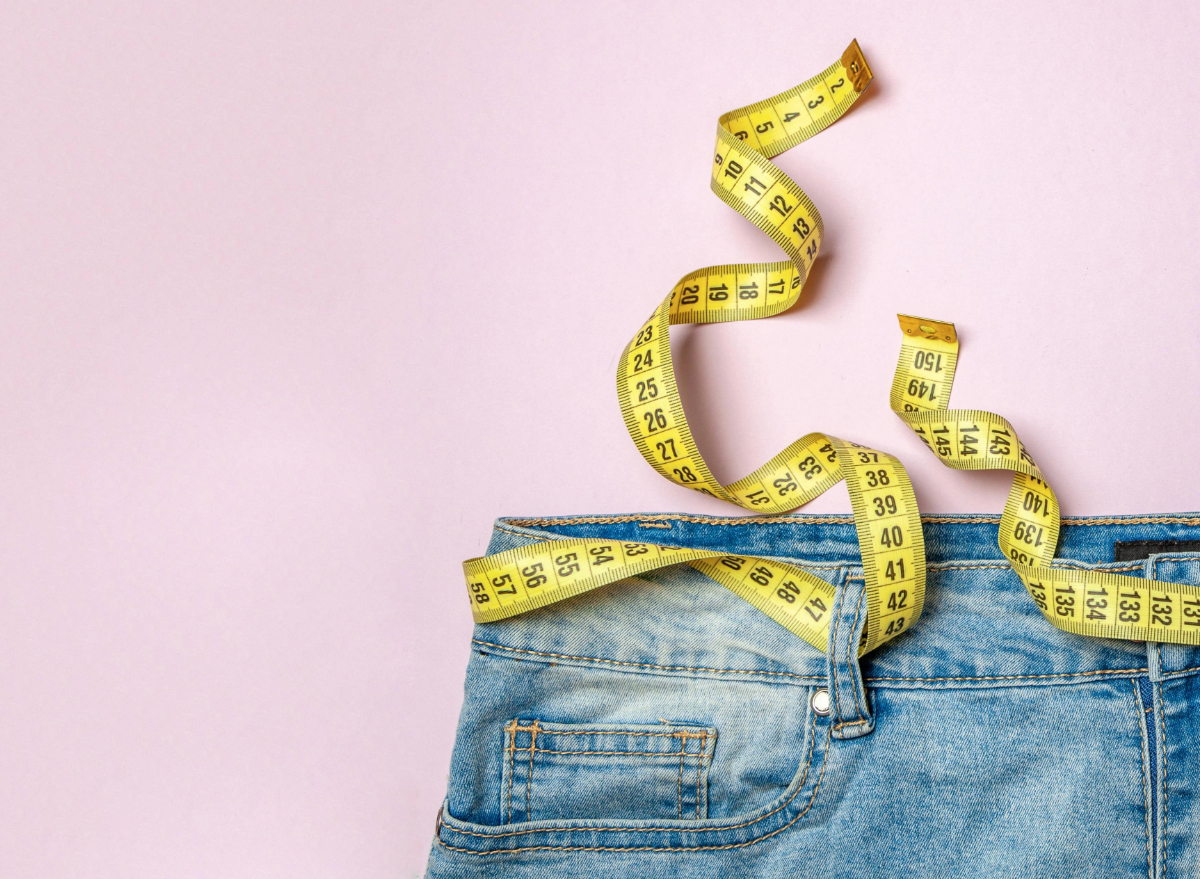
While reaching your 40s and 50s comes with many positive changes, like gaining wisdom and financial stability, it also provides some less-than-desirable physical ones. Namely, keeping the belly fat at bay. You may have tried everything under the sun, from fad diets to intense exercise routines, only to find that nothing seems to stick when cinching that bulging waistline. Fortunately, we here at ETNT have your back. We spoke with nutrition and fitness experts who share some of the best ways to keep belly fat under control in your 40s and 50s.
As you age, the accumulation of belly fat poses various health risks that extend beyond cosmetic concerns. For example, excess abdominal fat has been associated with an increased risk of chronic diseases, such as cardiovascular disease, diabetes, cancer, and liver issues. Additionally, carrying extra cushion around your midsection can impact hormone levels, reduce bone density, and cause sleep apnea. Keeping your belly fat in check is essential to improve your quality of life and support longevity.
Tracie Haines-Landram, CSCS, a certified strength and conditioning specialist and nutrition coach with Barbend, tells us, "Accumulating belly fat can feel like an uphill battle in your 40s and 50s as your body undergoes hormonal changes and metabolic shifts. While you can't target fat loss from a specific area of the body, we have control over science-backed strategies that help reduce overall body fat and maintain healthy body composition."
If you're ready to embrace a healthier, more vibrant version of yourself, read on for the 10 best ways to keep belly fat under control in your 40s and 50s. Then, be sure to check out The #1 Daily Floor Workout To Lose Holiday Weight Fast.
Pay attention to changes in your body.

Paying close attention to subtle changes in your body allows you to be proactive and address shifts in your metabolism, hormonal fluctuations, and potential health concerns.
"One of the most important and challenging steps in keeping belly fat under control is self-assessment," says Haines-Landram. "Your body changes as you age, but the biggest contributor to gaining excess body fat lies in your behaviors and how they have changed over time. Also, reflect on when your weight gain started to happen."
Do strength training.

According to a 2019 study, building and preserving lean muscle mass not only supports a sculpted physique but also ramps up your metabolism to burn more calories.
"Strength training is crucial for all ages, especially for those in their 40s and 50s," says Gianna Masi, CPT, RDN, a certified personal trainer and registered dietitian with Barbend. "Having more muscle mass will also help you be more metabolically flexible, meaning your body can utilize fats and carbs more efficiently. While being strong may not guarantee less abdominal or subcutaneous fat, it will help with the feeling of a more solid core and midsection."
Maintain cardiovascular fitness.
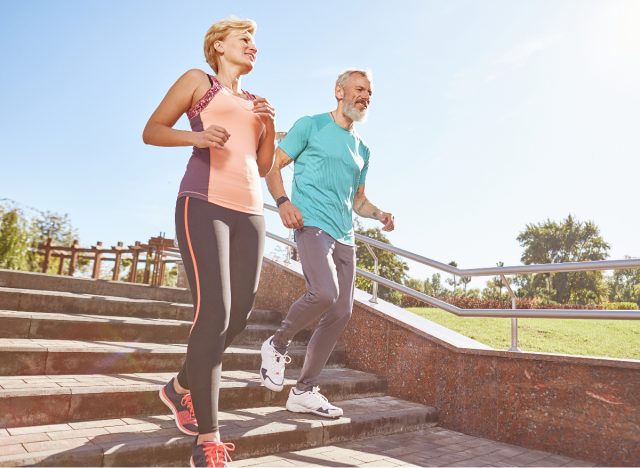
Whether jogging, cycling, or brisk walking, engaging in aerobic activities that elevate your heart rate can boost calorie burn and improve cardiovascular health to help shrink your waistline.
"It's important to maintain cardiovascular fitness as we age," states Haines-Landram. "Neglecting cardio can lead to less caloric expenditure and, over time, tip the scale balance toward weight gain. As your life changes, you may become more sedentary in the workforce and around the house. You must ensure you're moving your body to achieve at least the minimum recommendation for cardiovascular fitness: Aim for at least 150 minutes of moderate-intensity exercise per week."
Incorporate lower-intensity workout days.

Balance is the key when it comes to physical fitness. Incorporating lower-intensity days into your routine can provide your body with active recovery to help blast away belly fat.
"We need days that are lighter intensity and aerobic. This could be an outdoor walk, bike ride, hike, rowing machine, stationary bike, ski erg, walking on a low-moderate incline on a treadmill, or any aerobic modality that raises your heart rate without exhausting you," explains Masi.
Make daily movement a non-negotiable.

Whether taking the stairs, stretching at your desk, or going for a short walk, these daily activities have a cumulative effect on calorie expenditure.
"Increase your caloric burn throughout the day by increasing your Non-Exercise Activity Thermogenesis (NEAT)," says Haines-Ladnram. "You can burn more calories through daily movements than exercise alone, and the benefit of being active throughout the day is that it doesn't increase hunger as much as traditional exercise."
Add higher-intensity days.
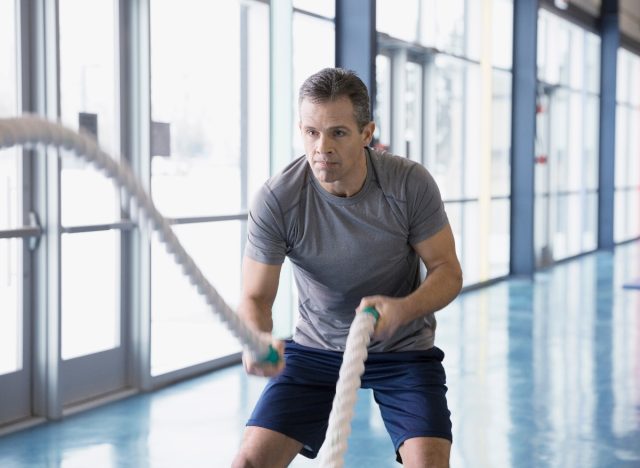
Research suggests that high-intensity interval training (HIIT)—a training style characterized by short, vigorous workouts with intense bursts of energy—is an especially effective training method for losing visceral fat.
"Every workout shouldn't be high intensity or pushing yourself to the max," says Masi. "Depending on the person and their fitness level, these higher intensity days are usually incorporated one or two days a week. These sessions will be shorter than the longer aerobic training days."
Prioritize healthy nutrition.
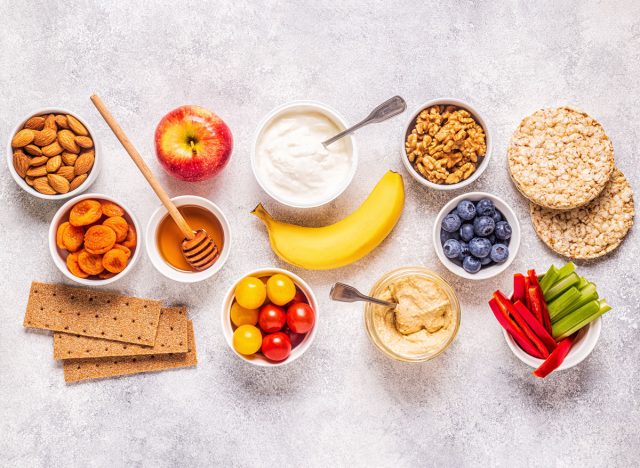
The National Institute on Aging recommends eating a balanced diet of fruits, vegetables, whole grains, low-fat dairy, and lean proteins to maintain a healthy weight as you age.
"You can easily undo all your hard-earned exercise efforts with a bad diet where you consistently consume more calories than you burn," explains Haines-Landram. "Some of the easiest first steps to eliminating excess calorie intake that leads to fat gain is to limit empty-calorie drinks like alcohol and soda, reduce highly processed foods, and cut back on foods containing added sugars. Additionally, fill your plate with nutrient-dense foods and lean protein."
Moderate your alcohol intake.
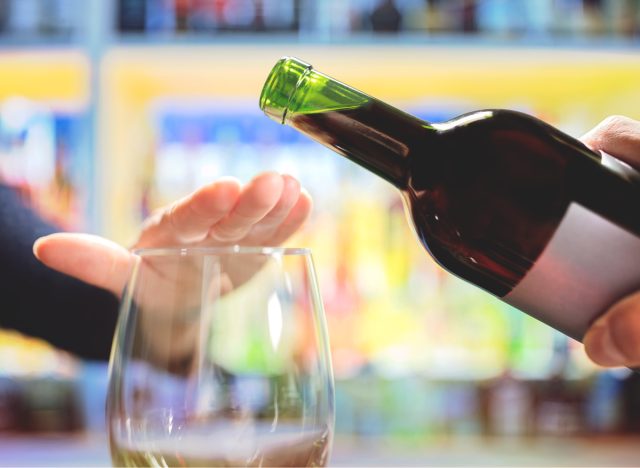
Moderating your alcohol intake is essential in your 40s, 50s, and beyond, as excessive consumption has been linked to extra visceral fat around the abdomen.
"Alcohol, while not a macronutrient, provides seven calories per gram without delivering nutrients or support to your muscles and body composition like other foods. Alcohol provides 'empty' calories that don't support bodily functions or muscles," says Masi.
Manage stress.

According to a 2018 review, chronic stress prompts the release of cortisol, a hormone associated with abdominal fat storage.
"Stress can increase cravings for more hyperpalatable 'comfort' foods," Masi explains. "The overconsumption of any food can cause weight gain by the laws of energy balance. So when we're stressed and choose more alcohol or higher calorie foods to feel better, this can disrupt many lifestyle factors that cause weight gain."
Get enough sleep.

The Sleep Foundation states that lack of sleep disrupts hormonal balance, increasing cravings for high-calorie foods and slowing your metabolism.
Masi tells us, "You need about seven hours of sleep, and some individuals may do much better with more. Sleep is the best performance enhancer for any cognitive or physical task. Sleep also impacts your food choices and other lifestyle behaviors that can either help or impede your health and wellness."
- Source: Why belly fat is dangerous and how to control it
- Source: Risk of Sleep Apnea Is Associated with Abdominal Obesity Among Asian Americans: Comparing Waist-to-Hip Ratio and Body Mass Index
- Source: Strength Training Improves Metabolic Health Markers in Older Individual Regardless of Training Frequency
- Source: Effect of Exercise Training on Fat Loss—Energetic Perspectives and the Role of Improved Adipose Tissue Function and Body Fat Distribution
- Source: Maintaining a Healthy Weight
- Source: Association of Alcohol Consumption With Fat Deposition in a Community-Based Sample of Japanese Men: The Shiga Epidemiological Study of Subclinical Atherosclerosis (SESSA)
- Source: Stress and Obesity: Are There More Susceptible Individuals?
- Source: Sleep and Overeating









